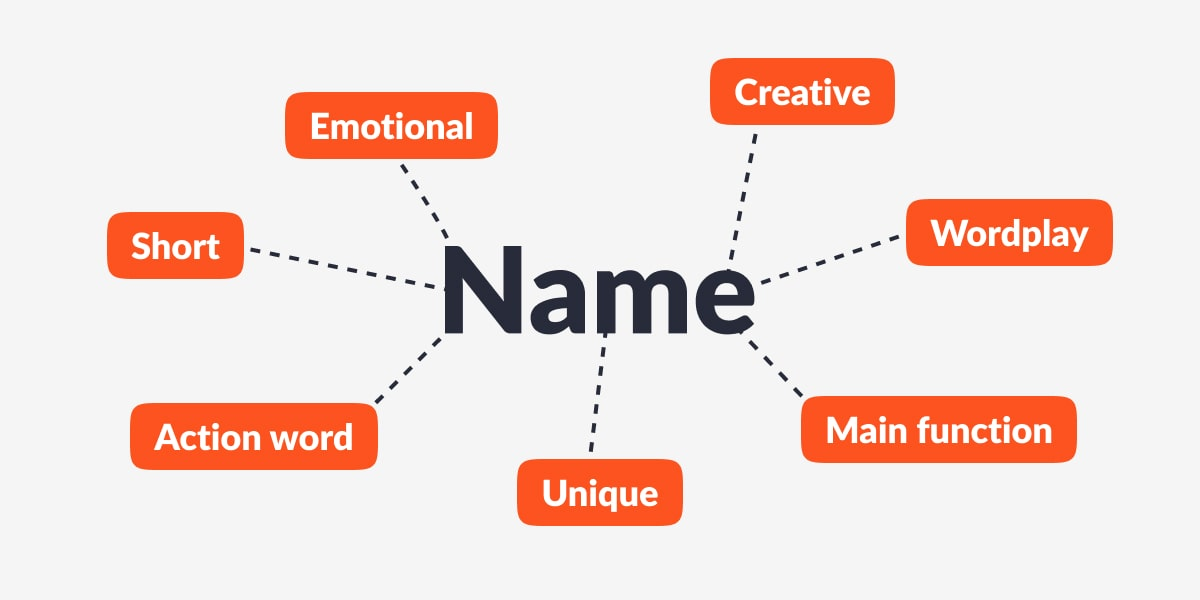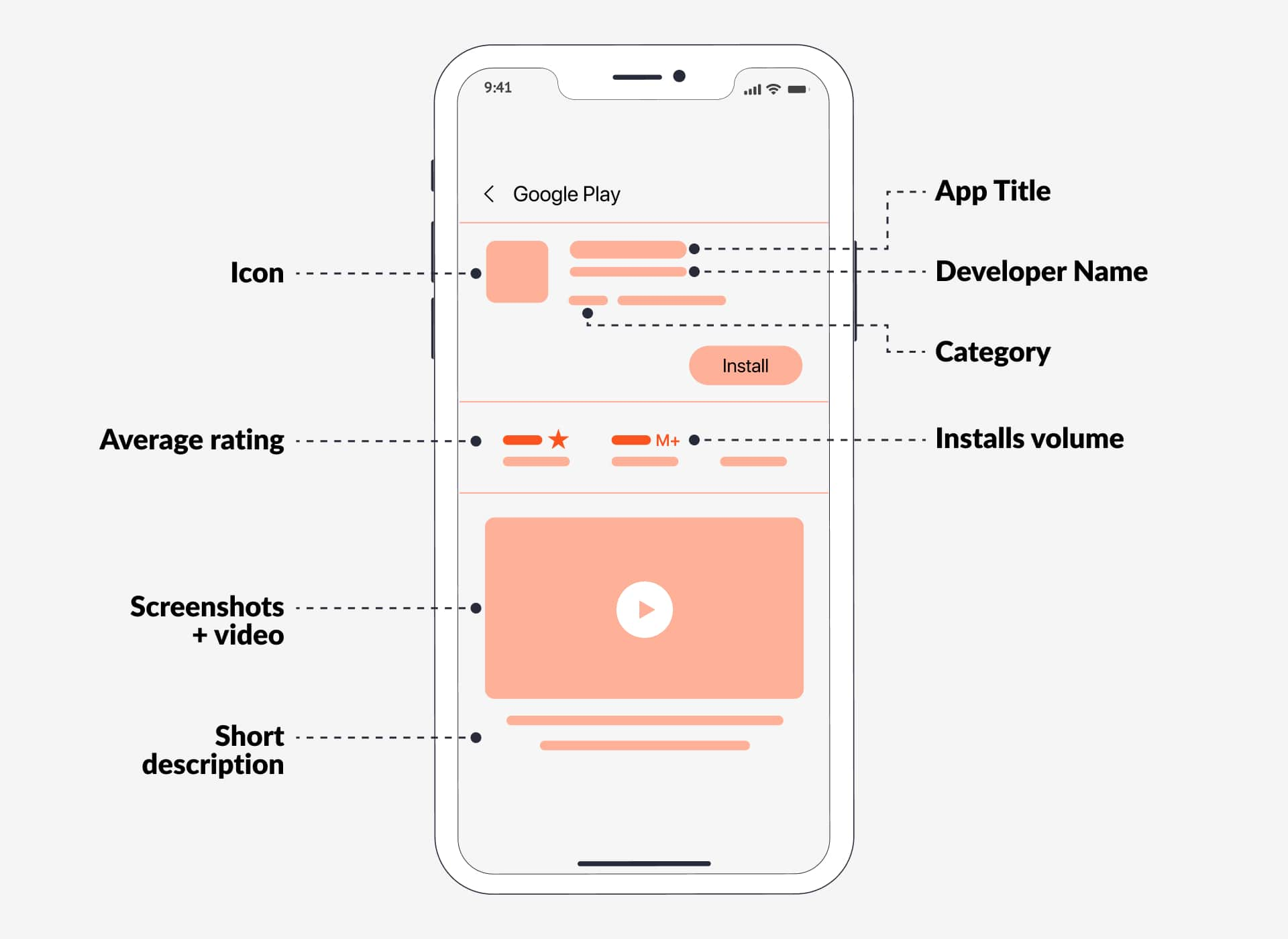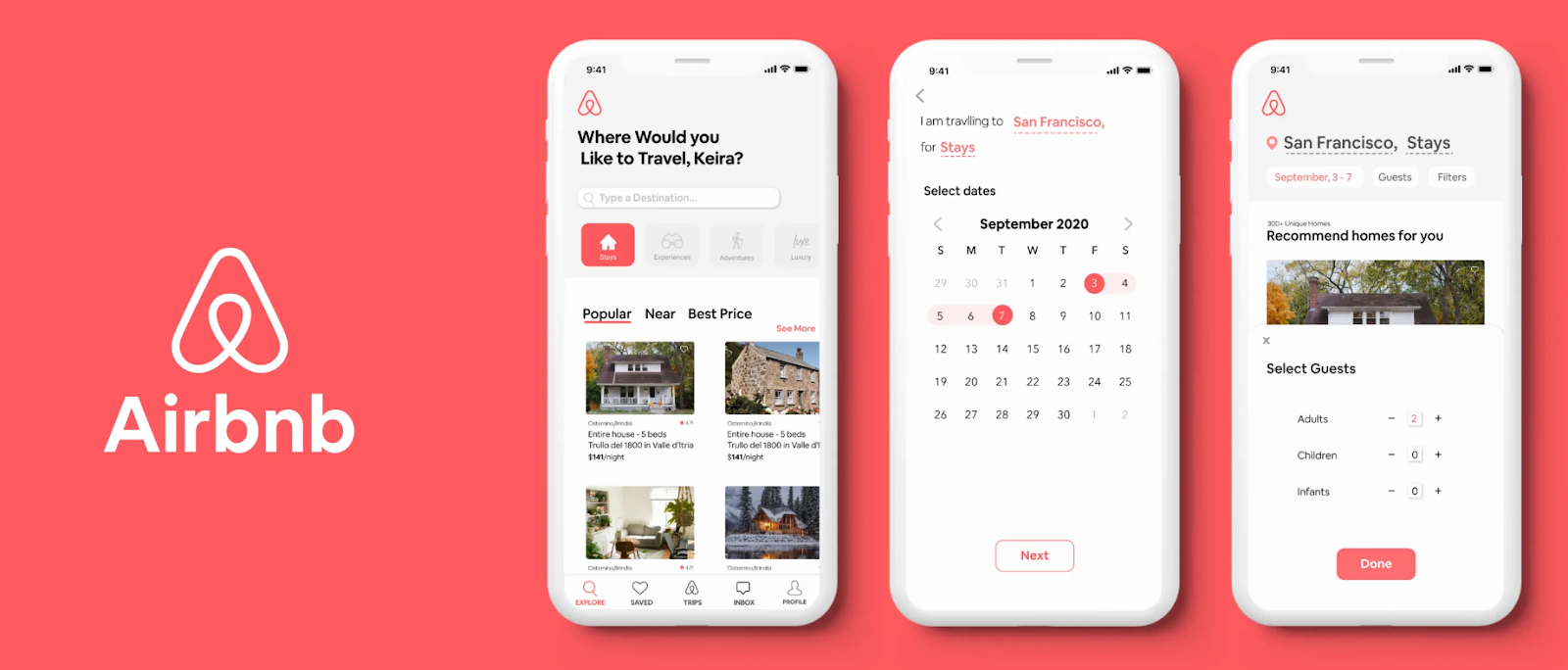
Alex Anikienko
Expert Writer
October 2, 2025

Alex Anikienko
Expert Writer
October 2, 2025

In 2024, users downloaded over 136 billion mobile apps, while around 5 million mobile apps are available in the Apple App Store and Google Play Store, and the number keeps growing. Clearly, the mobile industry is booming. Yet, did you know that 25% of users never open a new app more than once? Why is that? Because functionality alone no longer impresses. Users crave a spark, a feeling, an impression, something that captures their attention and keeps them engaged. That’s exactly where mobile branding steps in.
Our guide will walk you through the ins and outs of mobile app branding, from building a strong brand identity to proper brand positioning and promotion. You’ll learn how to transform your app into a recognizable, trustworthy, and memorable brand that keeps users coming back.
Before digging into the “how-to” of brand strategy, you need to understand what mobile branding actually is. When scrolling through app marketplaces, users encounter endless logos catching the eye with bright colors and sharp graphics. Many think this visual layer is all branding is about — creating a visual app layer to attract the user. But in reality, that’s just one piece of the puzzle.
Mobile app branding is about shaping and establishing a complete identity that makes your app stand out and be instantly recognizable. It defines how your app looks, sounds, and feels, forming a unified image and creating a distinctive user experience.
You can evoke emotional resonance and directly influence mobile engagement with the power of branding. This, in turn, motivates people to use your app more than once, explore its features and functionality, and even share it with others.
A In today’s market, users are bombarded with countless similar tools, products, and services, often skipping new apps without even opening them. Strong branding helps your app stand out and drives recognition. A distinct style, consistent messaging, and a clear visual identity make your app feel familiar and foster brand trust. Over time, that trust turns casual users into loyal fans who keep coming back.
On top of that, mobile app branding provides a solid base for your marketing efforts. Marketing campaigns built on a cohesive brand image and a well-defined concept are not only more effective in promoting your app but also enhance brand awareness and reinforce long-term brand loyalty.
A good app with innovative features does not automatically become popular. Today, a well-developed brand identity is a decisive factor for success. Without it, even the most technically polished apps risk getting lost in the sea of millions of competitors. A clear brand personality is essential for building a strong go-to-market strategy.
User personas are your guiding compass in app development, and the same applies to the brand identity. Factors such as users’ age, location, profession, income levels, and lifestyle all shape choices, habits, and in-app behaviors. A clear understanding of their motivations, challenges, pain points, and values allows you to craft a brand image that meets user needs and expectations. In simple terms, an app for college students should “speak” very differently than one designed for corporate executives.
Your app name is its first brand ambassador and one of your most valuable brand assets. It should spark curiosity and draw potential users in. While hinting at your app’s function, the app name should remain simple and easy to pronounce. Memorable names resonate faster, which is why rebranding Musical.ly to the snappier TikTok in 2017 helped catapult the app into global recognition.
That said, choosing a name is not just about being clever. Your app’s name must also stand out from competitors. A name that’s too similar to others, especially direct rivals, can cause confusion and even legal issues — both of which are major setbacks no brand wants.

“Why should someone download and use your app instead of another?” Your UVP is the direct answer to this question. Clearly highlight what sets you apart and emphasize the key benefit that makes your app indispensable. Keep it concise, sharp, and compelling so users instantly understand the value. A strong UVP serves as the cornerstone of your entire mobile app branding strategy, ensuring that every message you communicate and every design element you create consistently delivers the same promise.

Brand voice determines how your app communicates with users. A relatable, human-sounding voice fosters engagement and emotional connection, making users more likely to trust and interact with your brand. It’s crucial that your brand voice and messaging reflect your brand values and identity, while aligning precisely with your target audience. For example, a productivity app designed for professionals benefits from a clear, authoritative tone, while a fitness app, on the other hand, resonates better with an energetic, casual voice. Consistency is the key. Notably, your app should communicate consistently across all touchpoints. From onboarding tutorials to push notifications to social media posts, users should always feel like they’re interacting with the same “person.”
Once you’ve established the voice, focus on the visual identity that makes your app instantly recognizable and emotionally resonant. Core visual design system elements for mobile apps include:

At this point, it’s time to move into strategizing. What are the building blocks of effective mobile app branding? Below is a set of strategies that, when combined, can help your app stand out, engage users, and drive conversions throughout your sales funnel.
An app icon is a distilled representation of your brand’s image and identity. Its purpose is to grab attention instantly, so it should be simple yet meaningful, striking a balance between being catchy and avoiding clutter. When designing an icon, stick closely to your brand book, applying the same shapes, colors, and style guidelines used in your logo and other visual assets. Importantly, ensure it remains clear and recognizable across a variety of device screen sizes.

A clunky interface can undermine even the most creative branding approach. Worse still, poor user experience drives away 90% of users, who rarely return. Therefore, smooth UX is a non-negotiable, default element of efficient mobile app branding. From fast load times and intuitive navigation to responsive design, clean interface, and visual alignment with your brand story, every user interaction should feel effortless.
Wherever users encounter your app, they expect it to look and feel the same. A unified visual style, tone of voice, and UX patterns across all digital platforms strengthen recognizability and build loyalty. Brand consistency lies at the heart of trust and long-term user engagement.
Today’s users expect apps to adapt directly to their needs and preferences. Personalization sets your brand apart. Whether through implementing various gamified elements, custom illustrations, tailored notifications, or adaptive onboarding, personalization shows users you “get” them. When done right, it boosts retention rates and nurtures loyal fans.
Even the best-designed app can fail if it’s invisible. ASO ensures visibility in crowded app stores, which act much like digital shelves in a retail marketing strategy. High-quality screenshots, compelling visuals, keyword-rich descriptions, and positive ratings not only attract but also convert users while reinforcing credibility.

Customer support is often overlooked in mobile app branding, yet it plays a critical role in shaping a positive user experience. Make sure your users get easy access to fast and reliable assistance through a prompt in-app chat, a thorough FAQ section, or responsive email assistance. Reliable support fosters trust, strengthens loyalty, and turns users into your brand advocates.
Your mobile app should be discoverable outside app stores. A dedicated landing page that reflects your brand identity makes it easier for people to discover your app, supports marketing campaigns, and drives user acquisition. Use this space to highlight your key features, showcase testimonials, and provide direct download links. A strong landing page bridges marketing efforts with conversions.
When it comes to efficient mobile app branding, bigger names take the lead. Let’s look at some global brands that achieved impressive results with their branding strategies.
With a clean, minimalist design, combined with strong storytelling and personalized recommendations, Airbnb creates a smooth and engaging user experience. Crucially, it positions itself not just as a booking platform but as a lifestyle brand, delivering authentic travel experiences that give users a sense of belonging to a global community.

The Uber phenomenon reflects rapid growth from a simple idea into a globally recognized mobility solution. The app is a strong example of premium branding, featuring a meaningful name, a clear UVP (“Tap a button, get a ride”), a sleek logo, and a refined black-and-white color palette. It feels both personal and reliable to users while supporting global integration and scalable functionality.
-min.png)
Duolingo redefines the traditional concept of boring language learning by using a gamified and fun approach, which has become central to its branding. Its recognizable mascot and witty brand voice quickly attracted a vast user base. Duo the Owl gives the app personality and emotional warmth, while its playful reminders evolved into a global meme, generating the brand's massive organic reach.

If you want your app to be not only downloaded but also used, loved, and recommended, you’ll need to actively promote your mobile app brand after launch.
While high-end functionality still matters for modern mobile apps, long-term success today depends far more on delivering a specific experience, shaping perceptions, and building emotional connections. To stand out, your app needs to differentiate itself and align with the audience's expectations, and mobile app branding is the key to achieving that. It covers every step of building a powerful app brand, from defining identity to creating emotion-evoking touchpoints. More importantly, branding is not a one-time effort but a continuous process designed to fuel sustainable app growth.
Natalya Ustymenko
|
October 9, 2023
Expand mobile app brand awareness with content, personalization, optimization, gamification, and Reteno's omnichannel tactics
Reteno
|
November 14, 2022
Find useful tips on how to develop an effective emotional branding strategy

